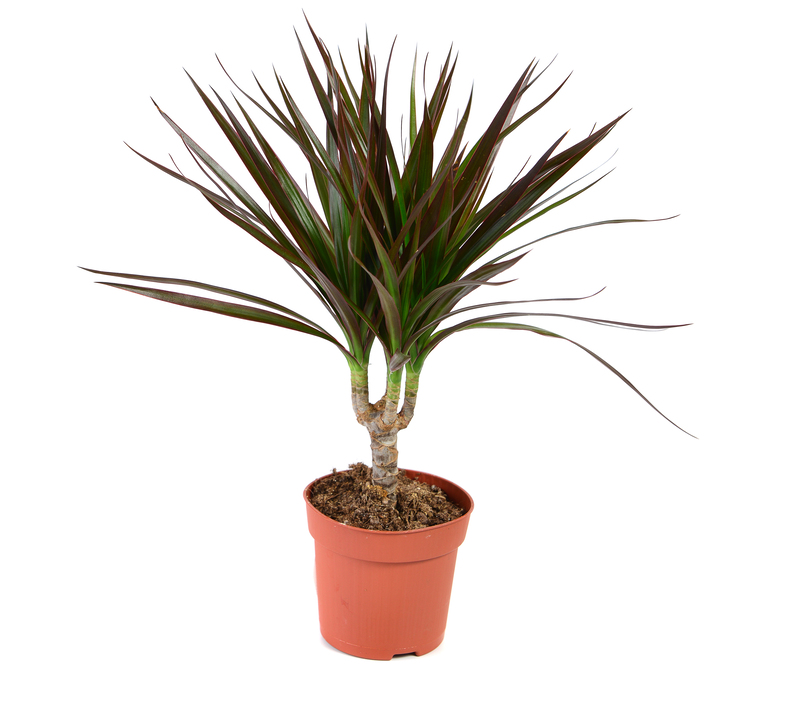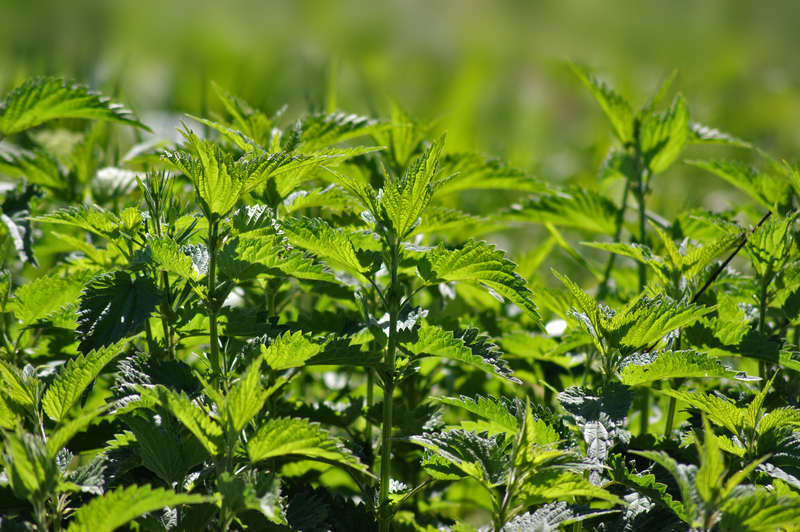Transform your garden into a haven for dogs
Posted on 15/09/2025
Transform Your Garden Into a Haven for Dogs: The Ultimate Guide
Every dog deserves a safe, engaging, and joyful outdoor space. Whether you have a sprawling backyard or a cozy patio, you can transform your garden into a paradise for dogs. From choosing dog-friendly plants to designing dedicated play zones, this comprehensive article covers everything you need to make your garden a true haven for your canine companions. Read on for expert landscaping tips, practical safety advice, and inspiration to revamp your outdoor dog haven.
Why Create a Dog-Friendly Garden?
Dogs thrive in environments that satisfy their instinctual needs--room to roam, interesting smells, places to relax, and opportunities for play. A well-designed dog sanctuary in your garden can:
- Enhance your dog's physical and mental well-being
- Provide a safe space to exercise and play
- Reduce unwanted behaviors like digging or escaping
- Minimize garden damage
- Strengthen your bond with your furry friend
Transforming your garden into a haven for dogs means creating a harmonious space that caters to both your pet's happiness and your own enjoyment of the outdoors.

Step 1: Assess Your Garden and Your Dog's Needs
Before making changes, observe how your dog uses the garden. Do they race along the fence line, seek shady spots, or dig in the flowerbeds? Take note of problem areas and opportunities for enrichment. Also consider:
- Dog's breed and energy level
- Dog's age and mobility
- Size of your outdoor space
- Your own style and garden aspirations
This initial step ensures that your dog paradise is tailor-made to your pet's preferences.
Key Questions to Ask:
- Where does my dog like to spend time?
- What hazards exist in my garden?
- How can I integrate play, relaxation, and safety?
Step 2: Dog-Proof Your Garden
Safety comes first when turning your garden into a dog haven. Prioritize these elements:
Secure Boundaries
- Install sturdy fencing: Aim for a fence at least 4 to 6 feet tall to prevent escapes.
- Block gaps: Check for holes or loose panels and repair promptly.
- Use safe gates: Double-latch systems prevent sneaky escapes.
- Consider transparent barriers if you want your pup to be able to see outside but stay protected.
Remove Toxic Plants and Hazards
- Avoid toxic plants: Common dangers include lilies, foxglove, azaleas, and yew.
- Store chemicals safely: Keep fertilizer, insecticides, and weedkillers out of reach in closed containers.
- Check for hidden hazards: Sharp tools, nails, glass, and other debris can harm curious paws and noses.
Tip: Download a list of dog-safe vs. toxic plants and regularly assess your yard for new growth or invasive species.
Step 3: Create Zones for Play, Relaxation, and Exploration
Transforming your yard into a sanctuary for dogs is more than just removing hazards; it's about enabling freedom, fun, and comfort.
Design a Dedicated Play Area
- Open lawn: A stretch of artificial turf or real grass for chasing balls and frisbees.
- Agility features: Add tunnels, ramps, or weave poles for enrichment.
- Interactive toys: Install tug posts or fetch stations.
Shade and Shelter
- Trees: Provide natural shade with dog-safe trees like apple or magnolia.
- Doghouses or shelters: Invest in weatherproof outdoor kennels or canopies.
- Shade sails and pergolas: Stylish solutions to keep your pup cool.
Water Fun
- Paddling pools: Shallow, sturdy dog pools for cooling off.
- Dog-safe fountains: Continuous water circulation encourages hydration and play.
Sensory Stimulation Zones
- Scent gardens: Plant rosemary, lavender, or mint for snuffling and sniffing.
- Digging areas: Designate a sand or dirt patch where digging is allowed. Bury toys or treats for treasure hunts!
- Textured pathways: Use soft grass, smooth pebbles, or bark chips for varied paw-feel.
Step 4: Choose Dog-Friendly Plants and Landscaping
Your choice of plants can help make your garden safe as well as beautiful. The best dog gardens avoid toxic species and fragile blooms that suffer trampling.
Dog-Safe Plant Suggestions
- Herbs: Dill, basil, parsley, sage, thyme.
- Flowers: Sunflower, marigold, camellia.
- Shrubs: Viburnum, forsythia, hawthorn.
- Grasses: Buffalo grass, fescue, rye.
- Edible treats: Blueberry bushes, strawberries (in moderation).
Landscaping Tips for the Perfect Dog Retreat
- Limit delicate flowerbeds in areas dogs frequent.
- Pathways: Use non-slip paving or mulched trails to guide dog movement and prevent muddy paws.
- Sturdy shrubs: Plant tough bushes to create natural borders and hide fences.
- Elevated beds: Protect your favorite plants from enthusiastic paws by raising them.
Step 5: Add Enrichment for Physical and Mental Stimulation
Every dog paradise garden should offer more than basic running space. Enrichment keeps your dog engaged, happy, and less likely to develop problem behaviors.
Ideas for Daily Fun
- Obstacle courses: Set up tunnels, hoops, or low jumps.
- Hiding games: Scatter kibble, treats, or toys in designated areas for sniffing and searching.
- Interactive feeders: Use puzzle bowls outdoors for positive, rewarding mealtimes.
- Training platforms: Low decks or flat rocks can be perfect for 'sit' and 'stay' practice in the fresh air.
- Nature trails: Curvy routes bordered with herbs or gravel encourage exploration.
Social Features
- Dog playdates: Invite fellow dog owners over for supervised play sessions in your secure yard.
- Viewing platforms: Small raised platforms can help dogs survey their territory and reduce barking at external distractions.
Step 6: Comfort, Cleanliness, and Maintenance
To truly transform your backyard into a dog haven, focus on creating a garden that is comfortable, clean, and manageable for both you and your pet.
Comfort Features
- Raised beds or outdoor dog beds: Perfect for afternoon naps in the sun.
- Shady resting spots: Position beds or mats in cool, sheltered corners.
- Outdoor fans or misting systems: Essential in hot climates.
Easy-Clean Surfaces
- Artificial turf: Drains well, stays green, and resists digging or urine burn.
- Pea gravel or stone paths: Reduce muddy paws and are easy to hose down.
- Dog waste bins: Place convenient, sealed bins for swift poo cleanups.
Low-Maintenance Suggestions
- Automated irrigation: Keeps lawns and shrubs hydrated without overwatering play areas.
- Robust ground cover: Clover and creeping thyme tolerate traffic and help prevent erosion.
- Mulching: Use pine bark or coconut fiber (avoid cocoa mulch, which is toxic to dogs).
Step 7: Encourage Positive Behavior in Your Garden Haven
Dog-friendly landscaping works best when paired with clear guidance for your pet. Set boundaries and encourage good garden etiquette by:
- Training your dog to use designated toilet areas
- Reinforcing limits around flowerbeds or sensitive plants
- Rewarding calm behavior in sunbathing or shaded areas
- Redirecting digging to the approved dig zone
Patience, consistency, and positive reinforcement will help your dog understand and enjoy their special outdoor sanctuary.
Inspiration: Real-Life Dog Gardens
- Cottage-style dog heaven: Winding gravel paths, tough perennial borders, and a dedicated digging pit under the shade of an apple tree.
- Modern city oasis: Artificial turf, raised planters, chic sun sails, and a splash fountain for hot days.
- Suburban backyard retreat: Fescue lawn, blueberry hedges, a tiny dog pond, and agility obstacles for year-round fun.
Explore gardening channels, social media, and dog forums for more ideas on transforming your garden into a safe, happy, and beautiful retreat for dogs.

Frequently Asked Questions
What are the best ground coverings for a dog-friendly garden?
- Artificial turf: Durable and low-maintenance.
- Clover and creeping thyme: Hardy, non-toxic cover that can handle paws.
- Mulch (pine or cedar): Avoid cocoa mulch, which is toxic.
How can I prevent my dog from escaping the yard?
- Install tall, secure fences with buried bases to stop digging.
- Check for and block any gaps regularly.
- Consider dog-proof landscaping like dense shrubs along the perimeter.
Is it safe for dogs to eat grass or plants?
- Some grass eating is normal, but always provide dog-safe plants and avoid any toxic species listed above.
- Monitor for overconsumption or signs of plant poisoning.
Are there benefits to having a dog-friendly garden?
- Yes! It promotes better health, happiness, and a stronger bond between pet and owner.
Conclusion: Make Your Garden a Dream Haven for Dogs
Transforming your garden into a haven for dogs is a rewarding project for both you and your furry friend. By combining safety, creativity, and enrichment, you'll design a backyard sanctuary that looks beautiful and feels welcoming to all. Start by assessing your space, dog-proofing, landscaping with pet-safe plants, and adding plenty of playful enrichment. Your efforts are guaranteed to be rewarded with wagging tails, happy barks, and cherished memories.
With planning and love, your garden can become the canine paradise your dog has always dreamed of!
Ready to Begin?
- Start planning your own dog garden transformation today!
- Share your ideas and success stories in pet-loving communities for inspiration and advice.
- Enjoy more adventure and connection in your very own dog haven backyard.



